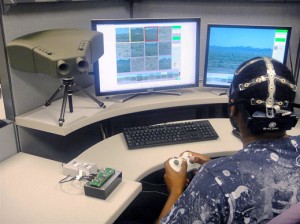Lithium, the lightest metal, when paired with oxygen from the atmosphere, makes for a tantalizing partnership in a lightweight battery. In theory, this “lithium-air battery” offers several times the energy per kilogram of today’s lithium-ion batteries. But so far, in laboratory tests the lithium gets distracted by dead-end chemical reactions that prevent the batteries from recharging. A one-shot battery is fine for a wristwatch, but not for a next-generation electric vehicle.
Last month, researchers in Rome and Seoul, South Korea, reported designing a lithium-air battery that did not have the recharging problem, achieving approximately 100 charge and discharge cycles with little capacity loss. And this week, a research team led by chemist Peter Bruce of the University of St. Andrews, in Scotland, reports in the journal Science a differently designed lithium-air battery that reached 100 cycles, losing only 5 percent of its capacity in the process. Bruce says that these recent results show that lithium-air batteries can sustain “a truly reversible reaction.” The group measured the mix of chemicals involved, showing that the lithium was really being recycled through a reversible substance, lithium peroxide (Li2O2), during each charge and discharge. Continue reading Lithium-Air Batteries Get a Recharge →
 Sentry duty is a tough assignment. Most of the time there’s nothing to see, and when a threat does pop up, it can be hard to spot. In some military studies, humans are shown to detect only 47 percent of visible dangers.
Sentry duty is a tough assignment. Most of the time there’s nothing to see, and when a threat does pop up, it can be hard to spot. In some military studies, humans are shown to detect only 47 percent of visible dangers.